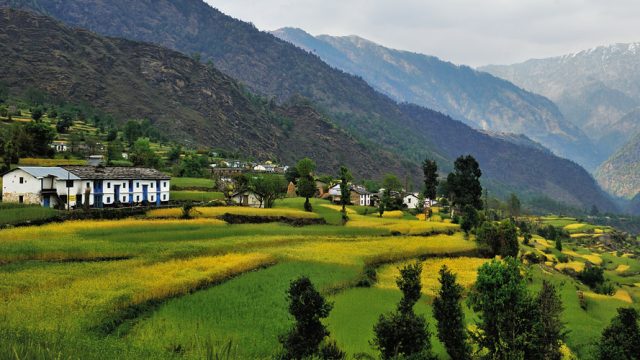In the year leading up to the first Indian Responsible Tourism Awards, we went all over the country looking for travel experiences that excite and inspire us to travel responsibly. We went and immersed ourselves in local cultures, leaving as small a carbon footprint as possible. In doing so, we managed to bring away incredible stories from beautiful parts of the country, where the air is fresh and life is slow. Here’s a selection of the most unique Responsible Tourism stories of 2016 from Outlook Traveller.

KARNATAKA: SLOW TRAVEL IN THE NANDI HILLS
One of the best ways to travel responsibly is to take it as slow as possible. If you’re travelling on foot, or like Srinath Perur, on a bicycle, then you pollute less, enjoy the views more and come away enriched with a destination’s history and culture. Perur managed to do exactly that, cycling around the Nandi Hills in Karnataka, taking in ancient temples, eating at local farm-to-fork restaurants, working with local potters, visiting traditional silk-spinning units and generally having a whale of a time. Click here to read the story.

ASSAM: THE WEAVING VILLAGE OF SUALKUCHI
When we travel with the intention of immersing ourselves in local culture, then we come away with a greater appreciation of traditional craftsmanship and the artistry and sophistication that goes into the making of cultural landmarks. The silk mekhala chadars of Assam are one such thing, priceless works of art that you can drape around yourself. Arundhati Nath visited the village that makes these chadars and saris, the small hamlet of Sialkuchi. She visited traditional looms, silk-worm farmers and a 400-year-old monastery, and came away with this fascinating tale. Click here to read the story.

UTTARAKHAND: THE WILD JOYS OF VANGHAT
Wildlife experiences are best had when things are quiet and there are no boundaries between the traveller and the terrain. One way that wildlife properties can ensure that is to be as non-intrusive as possible. Soity Banerjee discovered one such place in Vanghat, tucked away in one corner of the Corbett National Park, and was especially delighted to find that one had to trek from the road-head just to get there! Once there, she went on safaris, birding trips, had delicious local meals and thrilled to the night sounds of the jungle. Click here to read the story.

RAJASTHAN: GROWING A FOREST IN MEWAR
It is possible to (re)grow a forest in the arid hills of Rajasthan, found Suman Tarafdar, when he travelled to a corner of Mewar, well off the the well-worn Rajasthan tourism trail. Once there, he settled down into the luxurious quarters of a refurbished old palace, went birding, heard stories about a local leopard and took in the traditional professions of the area, from sheep rearing to exquisite metal work. Most importantly, he found that if there’s the will to do so, even a forest can bloom in a desert. Click here to read the story.

UTTARAKHAND: THE HIDDEN VALLEY OF SARYU
The Saryu river in high Kumaon is one of very few major Himalayan rivers that don’t arise from a glacier. Rather, it emerges from a myth-shrouded, deeply-forested gorge of a secret valley, where rhododendrons light up the mountainside, where fairies guard waterfalls, where sunsets take your breath away and wild high precipices echo with the cry of lammergeiers. Bibek Bhattacharya was suitably smitten. Click here to read the story.

ODISHA: THE MAGICAL LAND OF THE DONGRIA KONDH
India is an unbelievably diverse land, where local customs, religions, art, dance and culture can change every 100km. One of the most enigmatic and rich tribal culture in the country is that of the Dongria Kondh in Odisha. Anuradha Sengupta travelled into the heart of the Kondh lands, where the scent of mahua flowers intoxicate, where the laughter of courting women beguile, and enigmatic, just gods rule over every leaf, mountain and stream. Click here to read the story.




